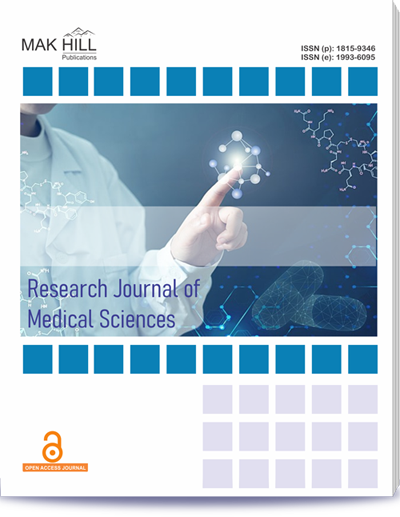
Research Journal of Medical Sciences
ISSN: Online 1993-6095ISSN: Print 1815-9346
180
Views
30
Downloads
Use of External Fixator as the Definitive Treatment option in fracture management During Covid‐19 Pandemic: A Prospective cohort study
Puneet Kumar Acharya, Hardik Labana, Mohit Kumar Issrani, A.V.N. Sai Harsha, Kartikeya Singh and Aishwarya Rai
Page: 374-379 | Received 21 Nov 2023, Published online: 15 Dec 2023
Full Text Reference XML File PDF File
Abstract
Open fractures are frequently encountered in musculoskeletal injuries and are frequently accompanied by the complication of infection. In this exceptional circumstance the supplementary rates of infection exacerbate the strain on the healthcare system that is already compromised. The primary objective of this study is to investigate the impact of the COVID‐19 pandemic on the management of open fractures. Prospective Observational Study. In 50 patients 18 years or older, radiologically confirmed fracture that can be fixed definitively with external fixator, Excluded patients were medically unfit, conservatively treatable and unable to give written consent. With Index Medical College, Hospital and Research Centre, Indore, Madhya Pradesh Institutional Ethics Committee approval. The study included eligible patients. We got informed consent in writing. A total of 50 patients with open fractures met the inclusion criteria. In the present study,around three‐fifth (62%) study subjects were males and remaining two‐fifth (38%) were females. Around one‐half (54%) of study subjects in our study belonged to age group of21‐40 years while one‐fourth (26%)patients were in the age group of 41‐60 years. Elderly patients (those aged >60 years) comprised 20% of study population. Mean age of study participants was found to be 43.60 years. In our study, 46% of fractures were of radius which were followed by tibial fractures which comprised of around one‐fourth (26%). Remaining sites of fracture included humerus (16%), femur (8%) and calcaneum (6%) respectively. Radiological outcome at the end of 6 months showed that 82% patients had union while 10% patients were found to have malunion and 8% as non‐union. In CORONA, external fixators can manage and treat fractures minimally invasively, according to our study. Radiological status assessment showed good union after follow‐up. After follow‐up, VAS, range of motion and power improved. For extensive evaluation as standard management, this technique needs a larger sample size. Restoring range of motion and power with an external fixator may be minimally invasive.
How to cite this article:
Puneet Kumar Acharya, Hardik Labana, Mohit Kumar Issrani, A.V.N. Sai Harsha, Kartikeya Singh and Aishwarya Rai. Use of External Fixator as the Definitive Treatment option in fracture management During Covid‐19
Pandemic: A Prospective cohort study.
DOI: https://doi.org/10.36478/10.59218/makrjms.2023.12.374.379
URL: https://www.makhillpublications.co/view-article/1815-9346/10.59218/makrjms.2023.12.374.379